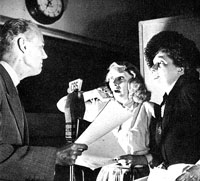Tetris was first created in 1984 by Alexey Pajitnov, along with Dmitry Pavlovsky and Vadim Gerasimov. “Tetris” was supposed to be a combination of ‘tetra’(the Greek prefix for four) and ‘tennis’. He created the wonderful game while working for the Soviet Academy of Science on an Elektronika 60, which was a computer used by the Soviets. It was made to be ported to the IBM PC. From there the game made its way to Hungry where it was then discovered by a British software house by the name of Andromeda. When they assumed they would secure the rights for the PC version from Pajitnov, they sold the rights to Spectrum HoloByte, who in 1986 released the game to the United States. It’s clear why everyone wanted a piece of this enormously popular game., Electronic Gaming Monthly’s 100th issue awarded Tetris first place as the “Greatest Game of All Time”! In IGN’s “100 Greatest Video Games of All Time” gave Tetris second place twenty years after the game was released here in the US. By 1987 Andromeda obtained the copyright license for the IBM PC version and any other home computer system. Just one year later the Soviet government began to fight for the rights to Tetris through an organization they created dubbed Elektronorgtechnica aka Elorg. Andromeda continued to license and sub-license rights that they themselves didn’t own, and Elorg had yet to see a dime. And one year after that the rights to Tetris had been claimed by half a dozen companies. Elorg maintained that they were the only one that could legally produce the game and signed the rights over to Atari Games and Nintendo for all non-Japanese console and handheld rights . Nintendo claimed Atari Games had stolen the rights. Atari Games sued Nintendo believing they had the rights. After about a month on the market the courts ruled in favor of Nintendo, but the lawsuits continued until 1993. In 1996 however the rights to the game were given back to the original creator Pajitnov from the Russian state. He founded The Tetris Company and claimed to hold copyrights for all Tetris products worldwide. It can be said that this is a game of epic porportions, in fact the largest recorded fully funtional game of Tetris came in 1995 some Dutch student at Delft University of Technology that stood 15 stories high on the Electrical Engineering department.
Tuesday, October 26, 2010
Wednesday, October 13, 2010
MZTV~Museum of Television
This is a unique and wonderful website with everything you could ever want to know about the television. Did you know that according to the MZTV website that there are more TV’s than indoor toilets, roughly one set for every four to five people that live on the planet. This website focuses on the importance of the receivers themselves, “charting the history of the small screen.” Like we discussed in class, Moses Znaimer (the chairman/ executive producer of MZTV Museum of Television) mentions how television were symbols of wealth and status in the 1950s, and how the 60s and 70s considered televisions to be household commodities. The website also talks about TV’s first star Felix the Cat. One of the most useful tools on the site is the Pioneers of Television, where you can learn about Paul Nipkow the first man accredited with the concept of the television, to Philo Farnsworth who demonstrated the first all electronic system of television in 1927. But my favorite aspect of the website is the ‘Television in Quotes’ section, here are some I found moving…
“Television is actually closer to reality than anything in books. The madness of TV is the madness of human life.”
Camille Paglia- Author/ Critic/ Educator
“Anyone afraid of what television does to the world is probably just afraid of the world”
Clive James- Author
“The potential audience of television in its ultimate development may reasonably be expected to be limited only by the population of the Earth itself”
David Sarnoff Chairman, Radio Corp. of America (RCA)
“Television is the first truly democratic culture, the first culture available to everybody and entirely goverened by what people want. The most terrifying thing is what people do want”
Clive Barnes- Critic, New York Times
Tuesday, October 12, 2010
Wired Article
I find it very interesting how far and in what pattern technology has emerged over the years. It seems that new breakthroughs in technology go hand in hand with popularity and success. From smell-o-vision, that allows an audience member to smell scents during major scenes, to James Cameron’s 3D Avatar, filmmakers are always trying to push the envelope to give the people what they haven’t seen before. One of the most interesting breakthroughs of the entire article in my opinion was Walt Disney’s Circle-Vision 360 (picture above). Composed of nine screens and shot using nine different cameras, Circle-Vision 360 was a movie going experience that literally surrounded the audience, and lead the way for what was to become IMAX films. It seems that each bit of breakthrough technology engenders the next big breakthrough. So the real question is, where would we be without all the simple technology we take for granted that has built the foundation for what we appreciate today? and what will the breakthroughs of tomorrow be?
Wednesday, October 6, 2010
The Radio~OTR.com
http://www.otr.com/ra/01%20The%20House%20Where%20Death%20Lived.mp3
Listening to the program on the radio is an interesting experience unlike any other. It was almost like listening to a book on tape. You get to hear the actors but you get to imagine what they would look like and how they interact. They use voices to distinguish characters and music to set the mood. But no background music just mood music. It is very interesting how they incorporate advertisements into the stories. "The Strange Dr. Weird would like to take a break from his shadow... Buy an Adams Hat!"
Subscribe to:
Posts (Atom)







